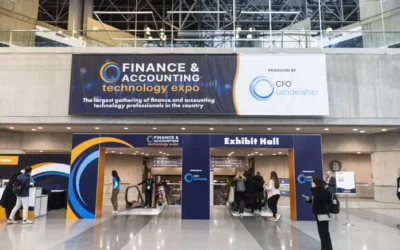The majority of finance chiefs in a recent Gartner survey expect their expenses to grow more slowly than their revenue in the year ahead.
According to the research and advisory firm’s 2026 Budget Assumptions survey of 142 CFOs and senior finance leaders, 54% of respondents said they expect their selling, general and administrative expenses to be about one to five percentage points below their expected revenue growth rate. Another 10% expect SG&A budgets to be more than 5 percentage points below their revenue growth.
Randeep Rathindran, distinguished VP of research in Gartner’s finance practice, said the survey shows a clear signal that CFOs don’t intend to “take their foot off the gas” in the coming year. He noted that, over the last couple of years, over two-thirds of S&P Global 100 firms have been aiming for some form of cost-cutting. “What we’re seeing is that the trend continues,” he said in an interview. Finance chiefs, he said, are “continuing to be careful, especially with SG&A expenses.”
But that’s not the case for every respondent. About a quarter (26%) said their SG&A budget would be basically on par with their projected revenue growth rate. Another 8% expect SG&A to surpass revenue growth.
Where are finance chiefs looking for cost savings? Per Gartner’s research, human resources ranked at the top, with 57% of respondents citing that area as a spot for budget reductions. Fifty-three percent of respondents selected corporate IT as another area for savings, and 40% picked legal and compliance.
Rathindran said HR budgets are likely projected to be lower because organizations plan to keep headcounts mostly the same in the year ahead. Artificial intelligence tools, too, could be playing a role in some execs’ plans for 2026.

“This pattern reflects a growing willingness to rethink traditional support functions considering conservative hiring plans and AI-driven transformation,” Gartner officials said in a news release. “In fact, 42% of CFOs anticipate some level of AI-driven headcount reduction across SG&A or support functions, with 33% expecting reductions between 1-5%. These modest headcount reduction assumptions are expected, given AI’s improving effectiveness at performing rule-based and judgment-based SG&A work.”
Earlier this month, CFO.com sister publication CFO Dive reported that more than 17,000 job cuts this year have been directly tied to AI.
It remains to be seen whether such headcount reductions will pay off in the long term. By Gartner’s own calculations earlier this summer, generative artificial intelligence remains in the so-called “trough of disillusionment.” That’s a period where organizations experience “uneven ROI” from a piece of technology, according to Gartner’s “hype cycle.”
For what it’s worth, finance chiefs expect to spend more on their existing staff in 2026, per Gartner’s budget survey. Almost half of respondents said they expect a more than 4% increase in direct labor rates in the year ahead. In addition, just about 75% of respondents expect 3% merit increases for their workers in the new year.
Gartner’s budget survey also showed that about a third of CFOs (37%) aim for operating expense savings of between 1% and 2%. Another 42% of respondents are aiming for “more substantial savings” between 3% and 5% of operating expenses.
“CFOs are leveraging SG&A expense discipline as their primary lever to drive operating expense savings and are setting explicit operating expense savings targets,” Gartner officials said in the release. “Rather than implementing broad, across-the-board cuts, CFOs are calibrating their approach, seeking incremental cost containment that preserves essential capabilities and drives productivity improvements.”





